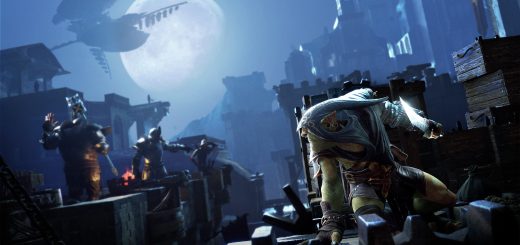Riot says ditching loot boxes will help Legends of Runeterra stand out from the CCG crowd
It’s been a big week for Riot Games – and one that finally means that “s” makes sense. Celebrating its 10th anniversary on Wednesday, Riot announced a slew of completely new games, and projects ranging from an animated series to a full port of League of Legends onto mobile.
One of the most interesting things amongst all that celebratory noise was the announcement of Legends of Runeterra, a collectible card game, or CCG, using League of Legends characters and lore. It’s what Hearthstone is to World of Warcraft, essentially, or more pertinently what Artifact is (or perhaps was) to rival MOBA Dota 2.
It’s releasing at an unusual time. Hearthstone’s audience has, by most accounts, gradually shrunk – current issues with Blizzard and China notwithstanding – and Artifact is perhaps the most high-profile flop in recent memory, with the huge reputation of Dota, resources of Valve, and experience of Magic the Gathering legend Richard Garfield not enough to keep it ticking along in any meaningful way. There’s also, intriguingly, a complete lack of booster packs, loot boxes, or any kind of random chance microtransaction in the Legends of Runeterra – a major change from the genre’s norm.
Lastly, of course, it’s worth noting the situation at Riot over the past year. Several lengthy reports have detailed a severely harmful company culture, with problems ranging from harassment to institutional sexism resulting in a lawsuit, tabled by Riot employees, that was settled by the company earlier this year. We spoke to Steve Rubin, a former professional Magic the Gathering player who’s now a balancing lead on Legends of Runeterra for Riot, about the origins of the game, why they ditched loot boxes, and his personal experience of what has and hasn’t changed at Riot over the past year.
So what’s the origin story for Legends of Runeterra – when did someone at Riot sit down and say: okay, let’s make a card game?
Rubin: So there’s a lot of people at Riot that come from a lot of different gaming backgrounds, and so a lot of them, specifically Jeff Jew (executive producer) and Andrew Yip (design director), are really into Magic the Gathering and really have an inspiration in the CCG genre. And at Riot we really liked the idea of building a game for core gamers who really want to go deep into a genre, and for card games we really felt there was – there are still the offerings that exist – but that could be improved upon. And I think the basis of Legends of Runeterra was just the idea of like, “Hey, we’re card game players, for 20-plus years, we kind of know what the good and the bad is,” and then some ideations came from that – and there have been a lot of different versions of Legends of Runeterra – and we finally came to what we have now.
So when did you personally come on board, did Riot come and pluck you out, given your history as a professional Magic the Gathering player?
SR: So actually, this is a pretty interesting story, because I was part of a team of four professional Magic players that Riot called in about three years ago, to work on a contract to test out Legends of Runeterra. But what’s interesting about that is I’m actually the first non-Rioter to play a Riot R-and-D game, which was – you know, we’re very secret about that kind of stuff – it’s awesome now we can talk about it candidly, and I can say “Legends of Runeterra” and I’m not living in stealth mode all the time. So then after the contract was over, about a year later Riot approached me to be like “Oh, do you want to be a playtester full time?” and then I ended up as a playtester and then I transferred into design, and that’s kind of how I ended up on the team now.
So what makes Legends of Runeterra stand out over say Hearthstone, or Magic the Gathering, or Artifact or something like that? What sets it apart?
SR: I think the biggest thing is definitely accessibility. We really – at Riot and obviously on the Legends of Runeterra team as well – we want to bring games to where players are, and let them play without barriers to entry. And with Legends of Runeterra we have no random booster packs, and how it works is you actually have this thing called the Vault, which is this system where every week you play, and at the end of the week you get a chest that scales based on how much you played that week, full of card content. Because interestingly enough we tried out no-pack models, but players when we tested them in labs were like “Hey, where are the packs?” like people want to open stuff. So we kind of took the good part about pack opening, which is like, you want to get that “spice,” right? And we took out the like, “you have to pay for randomness.”

